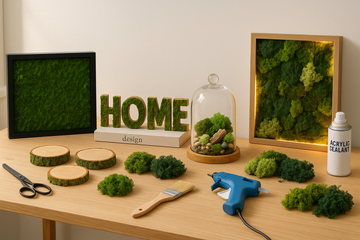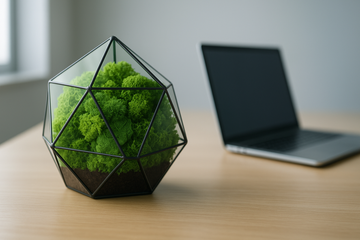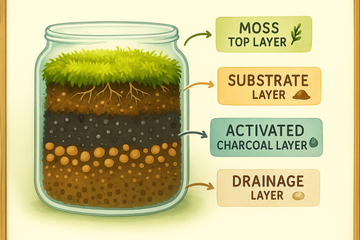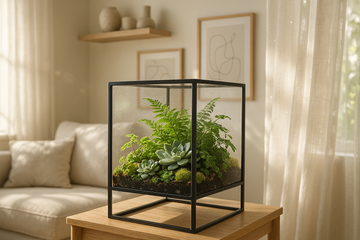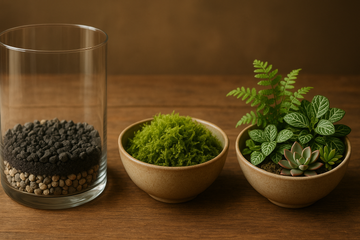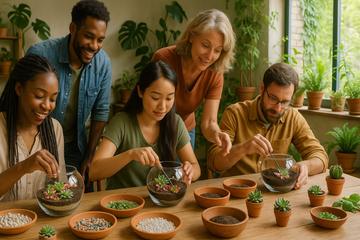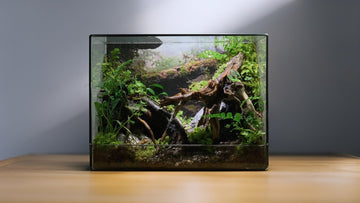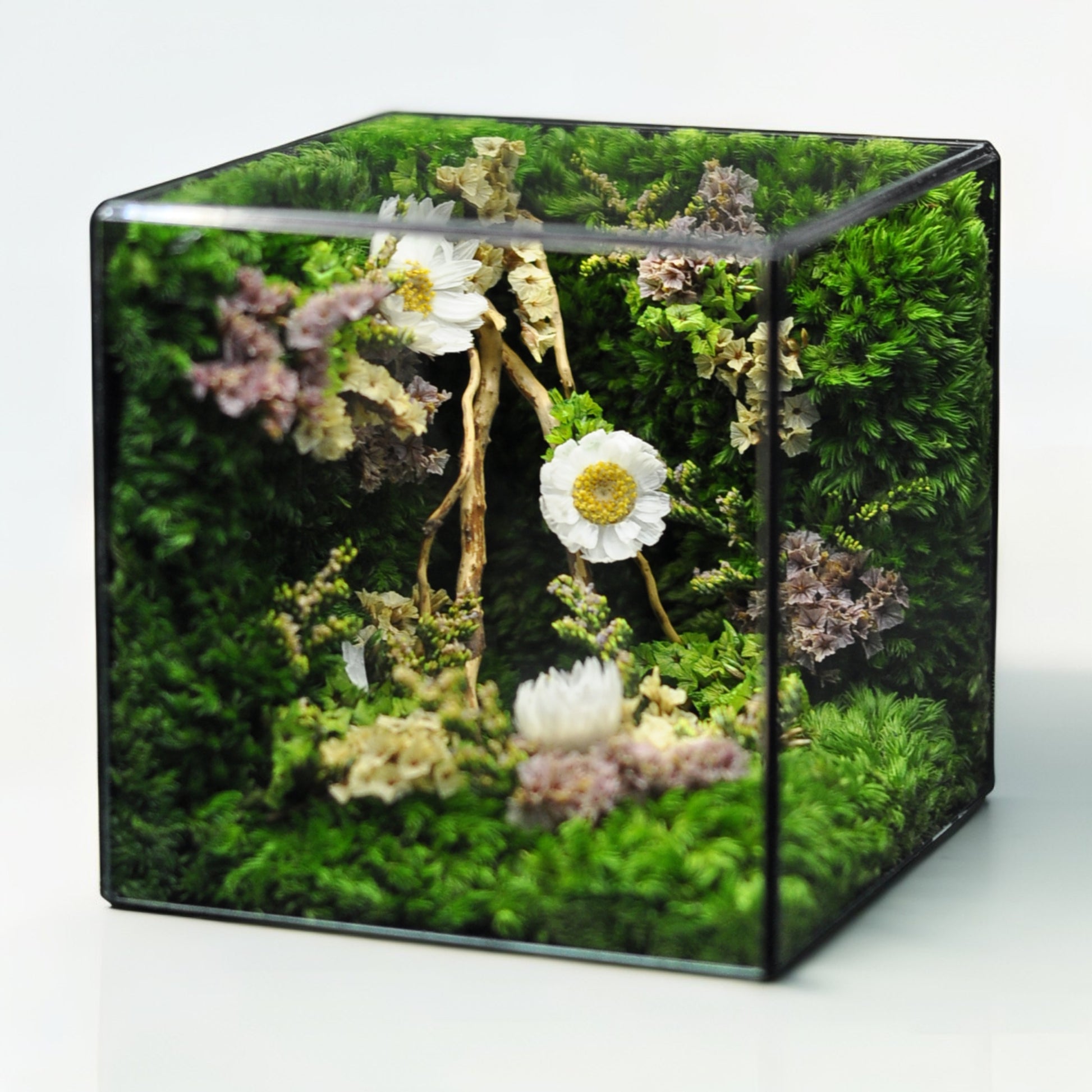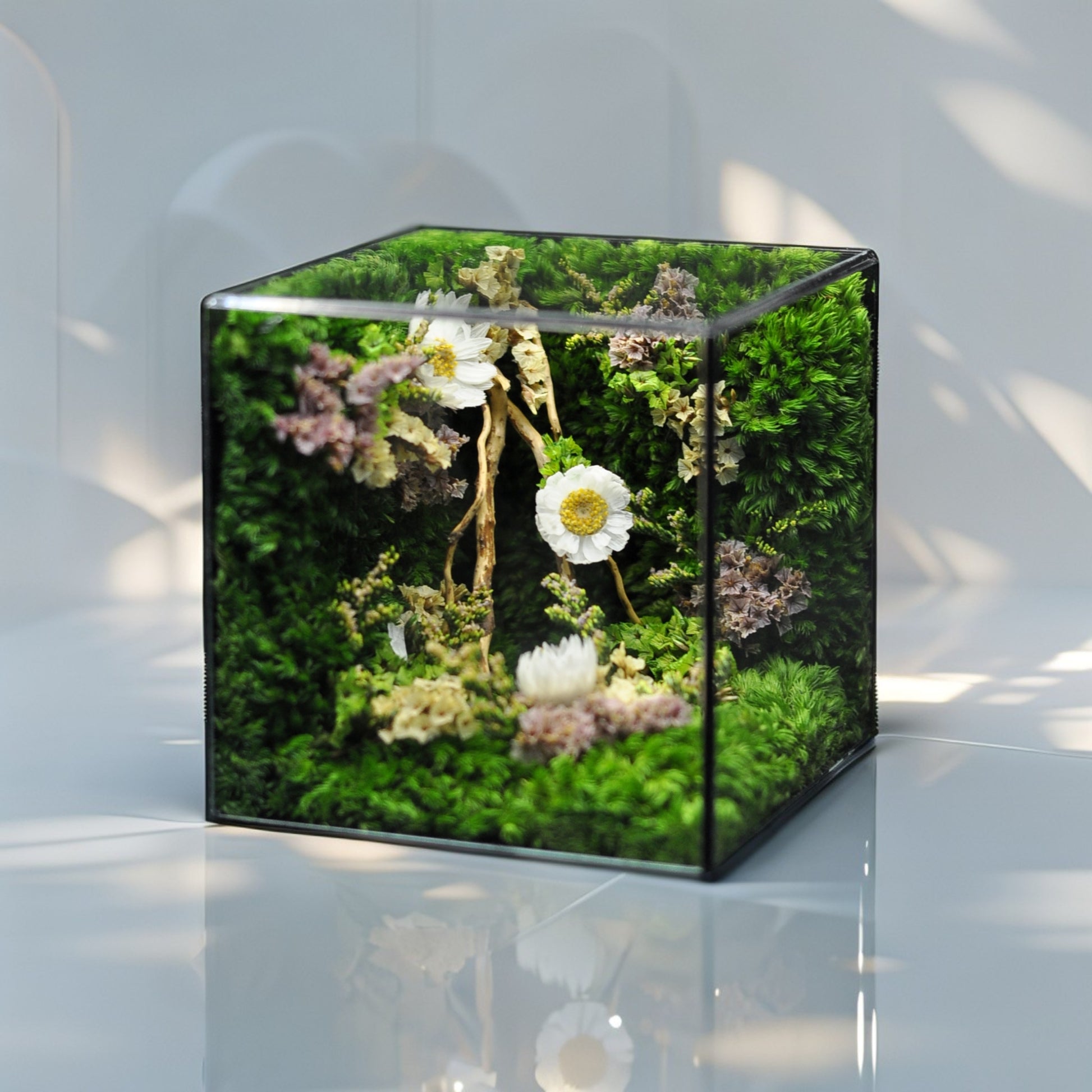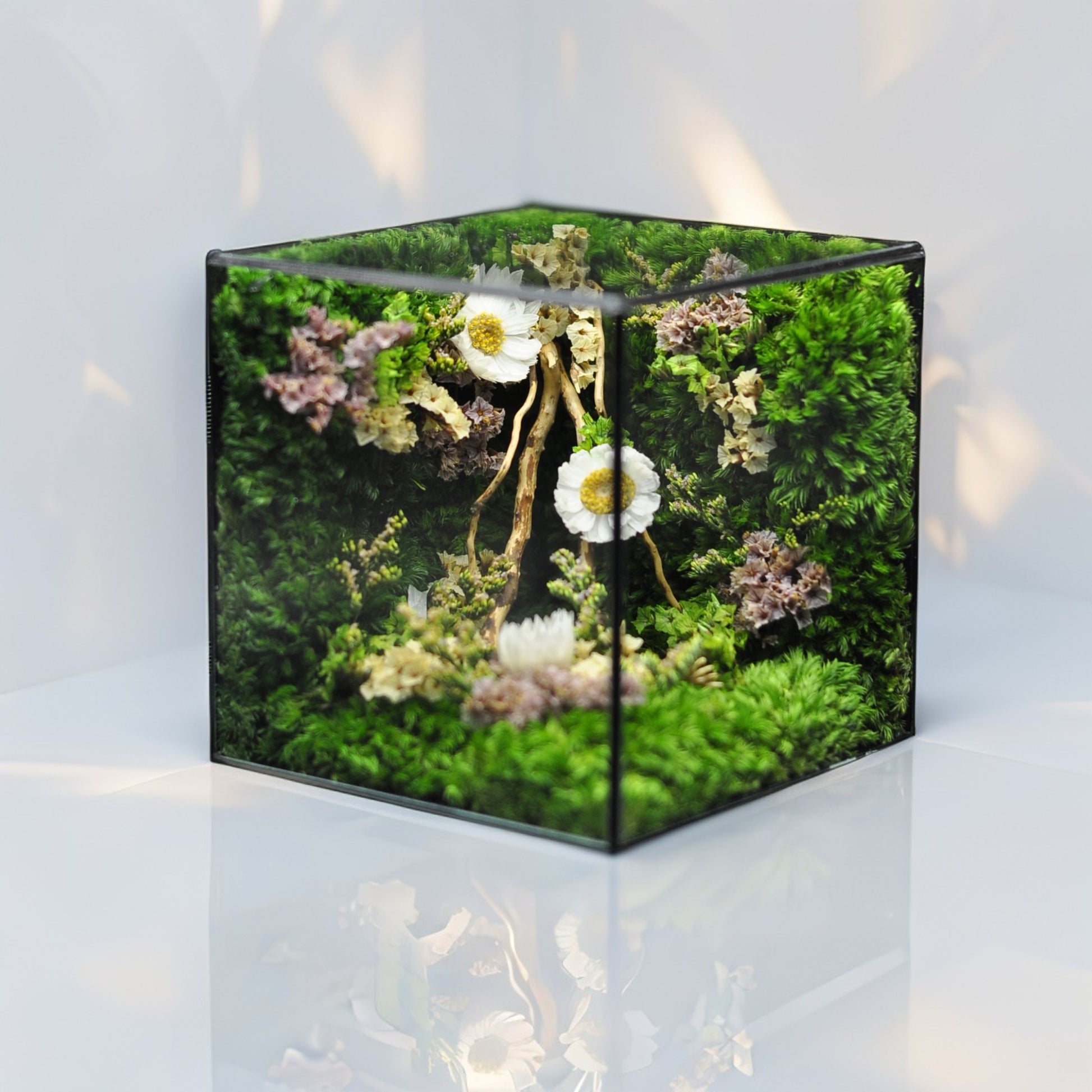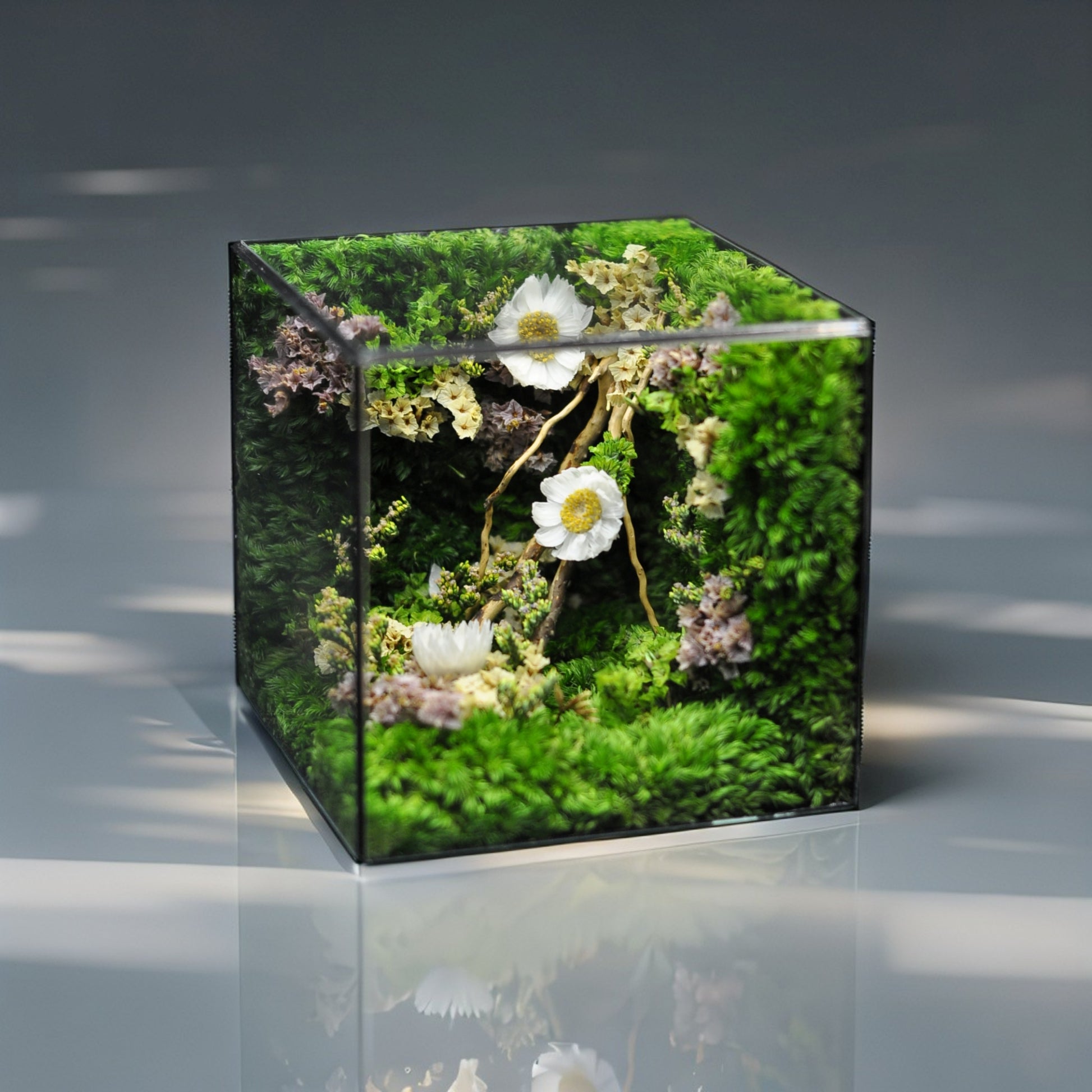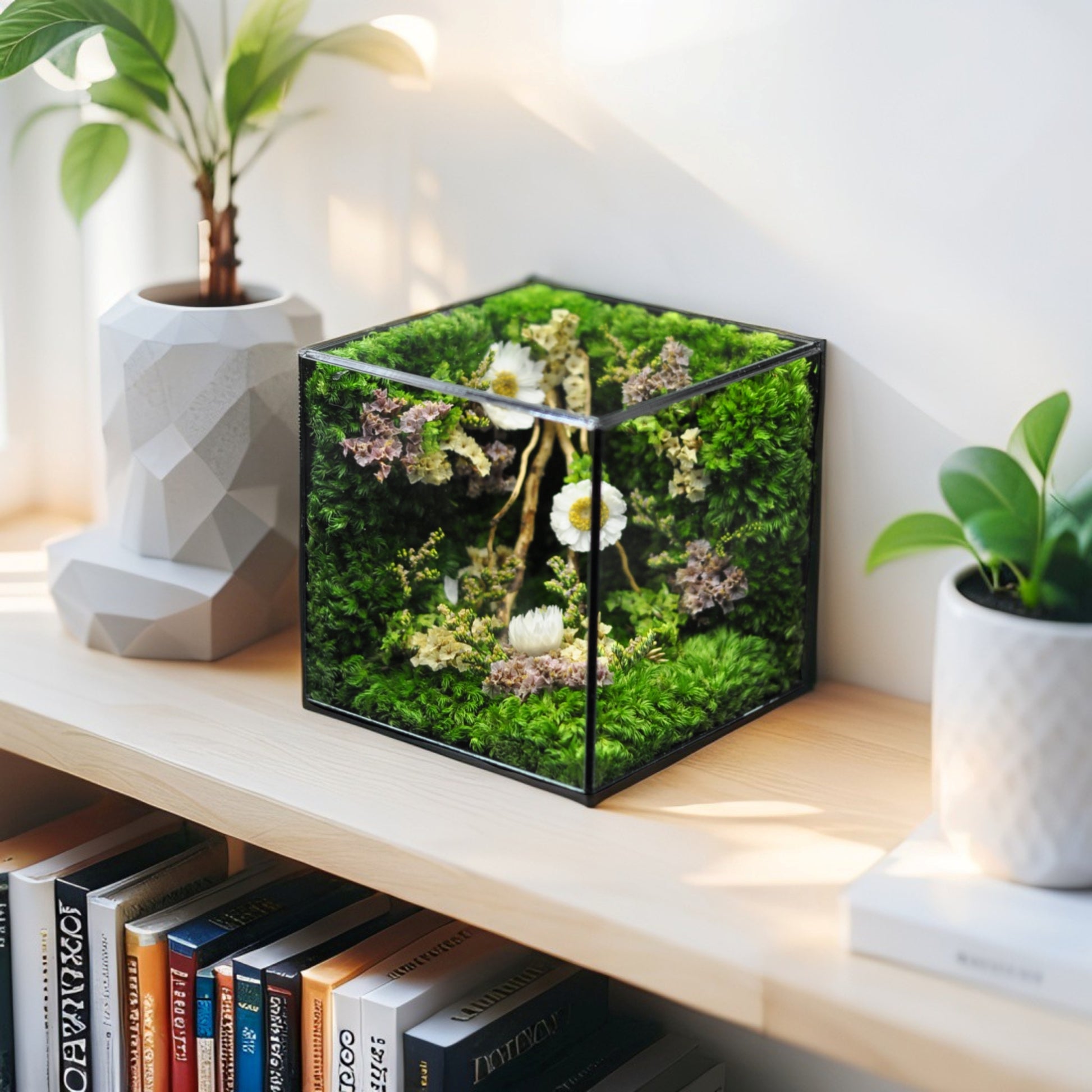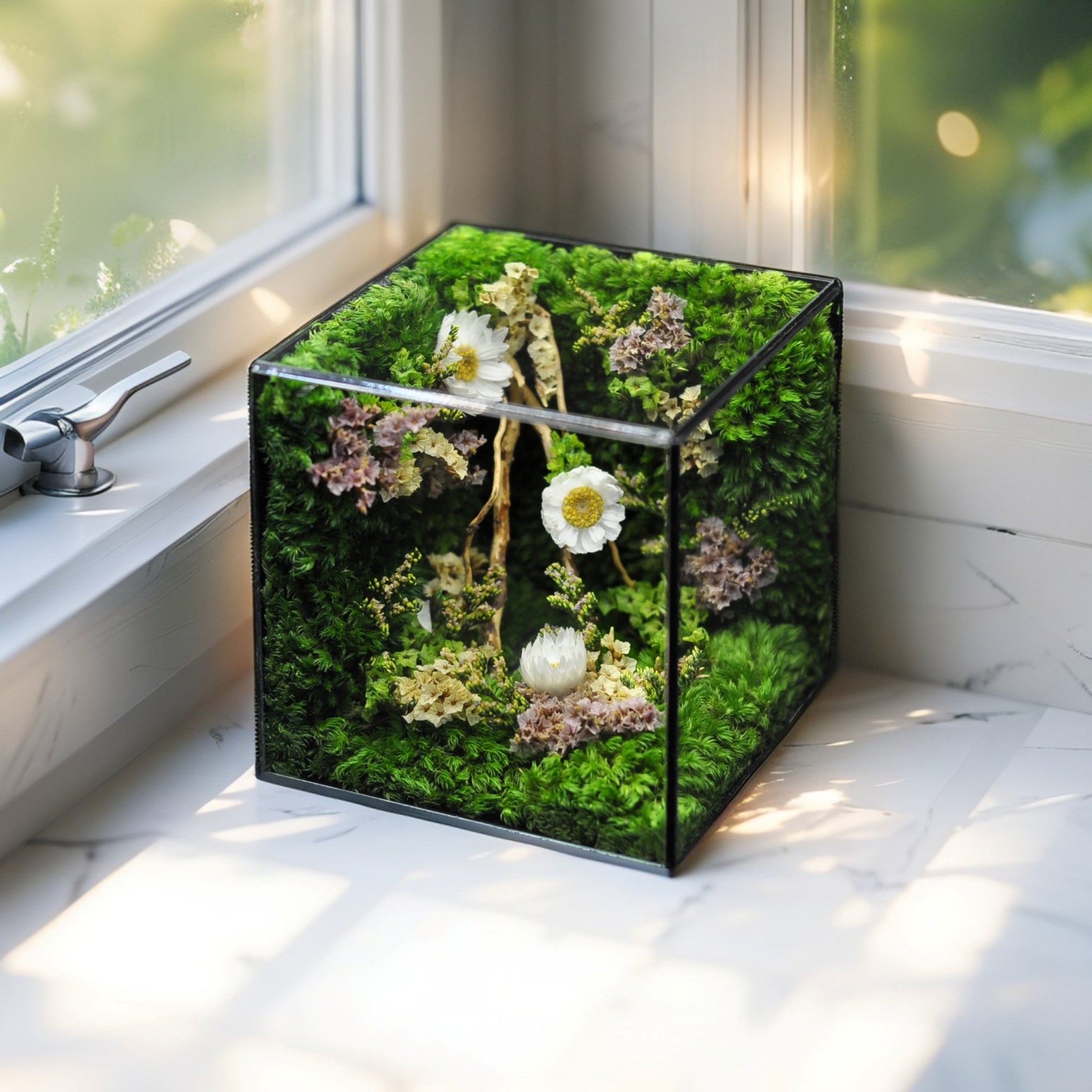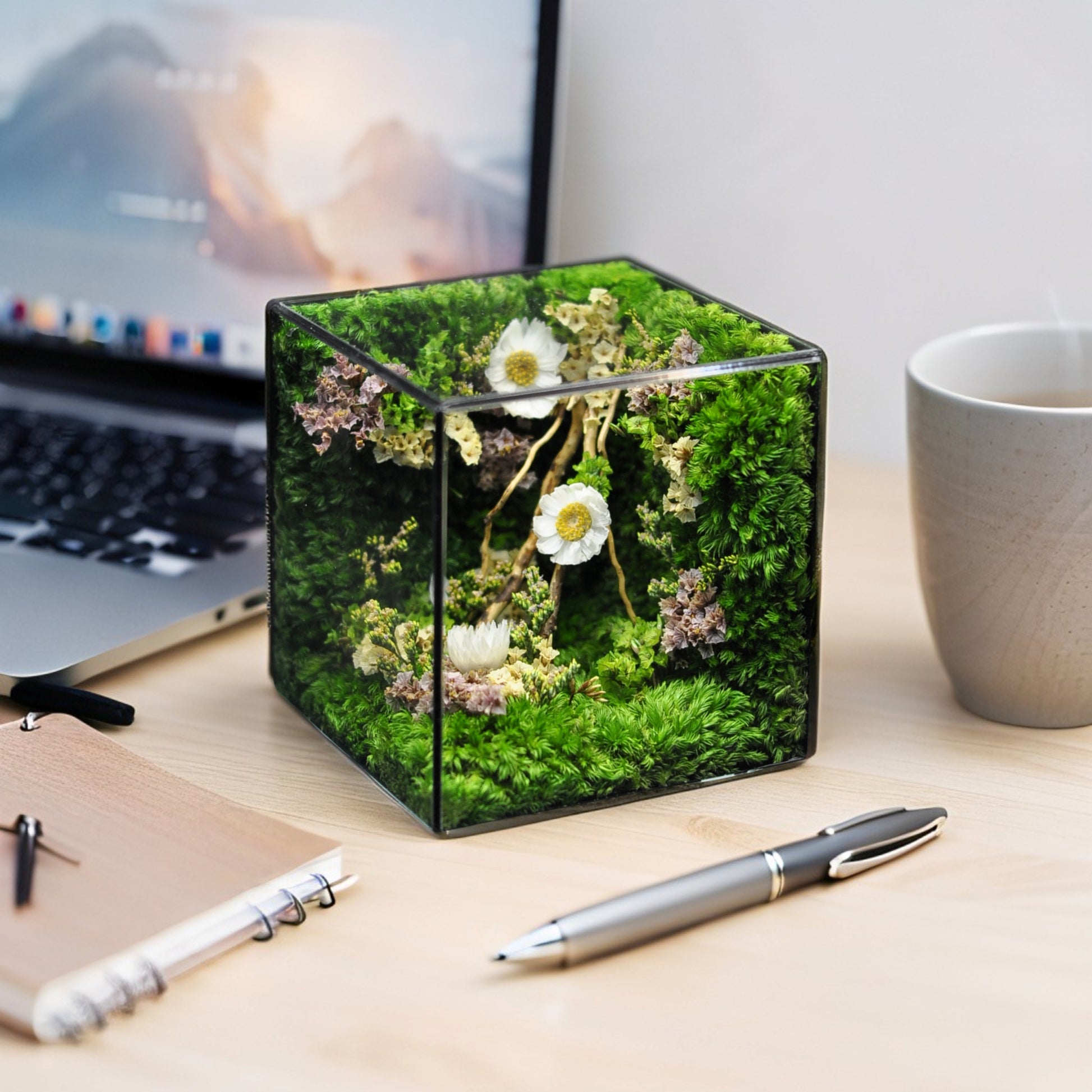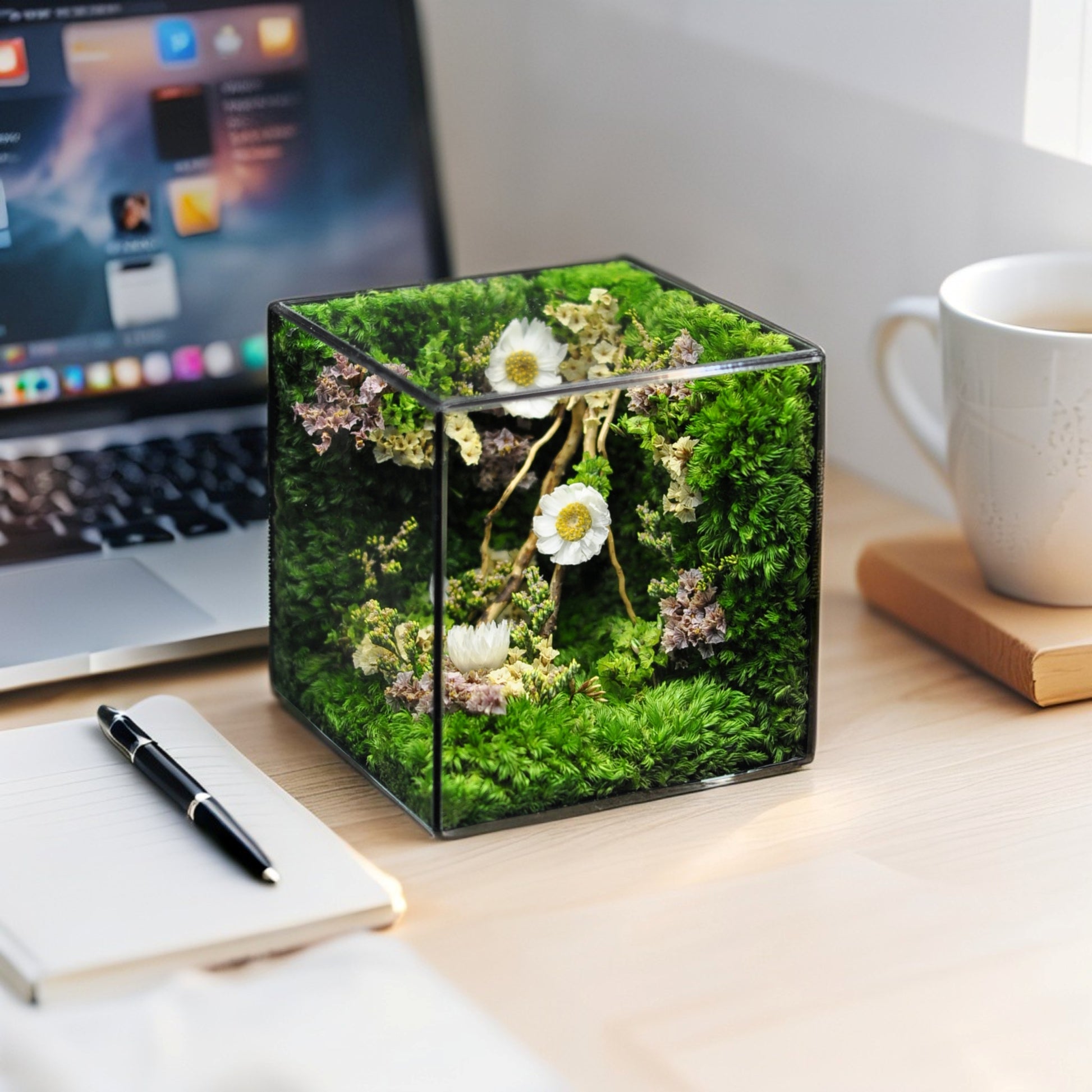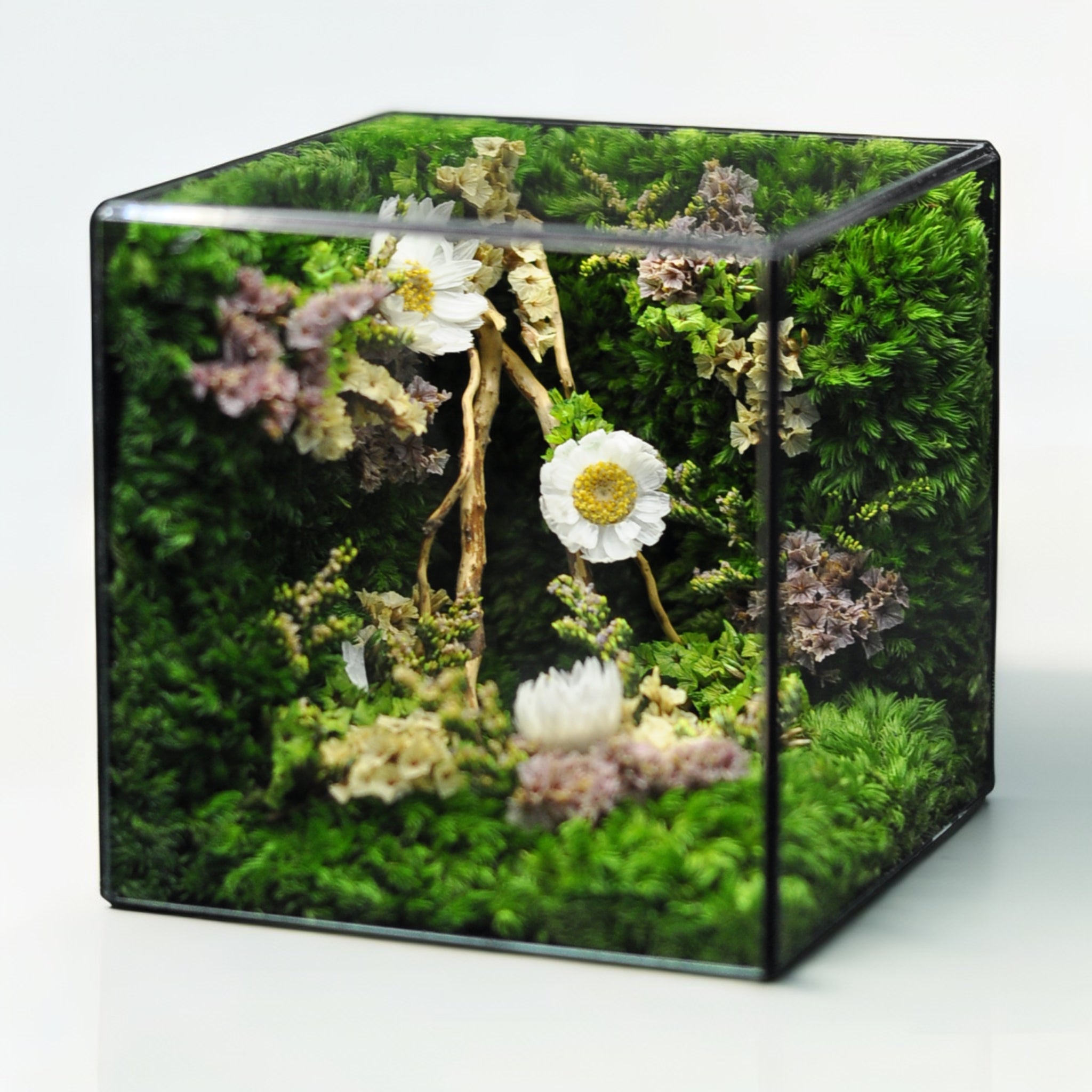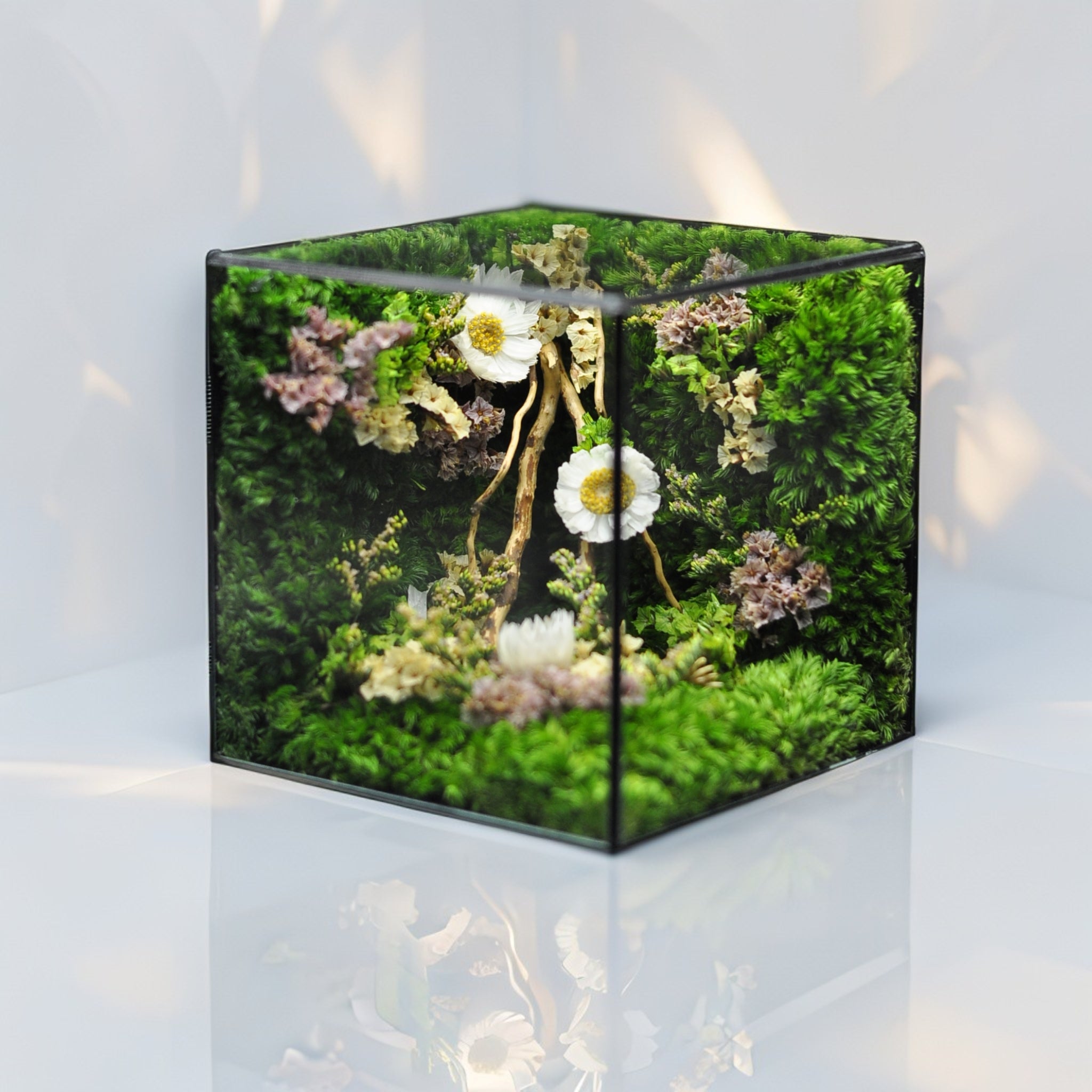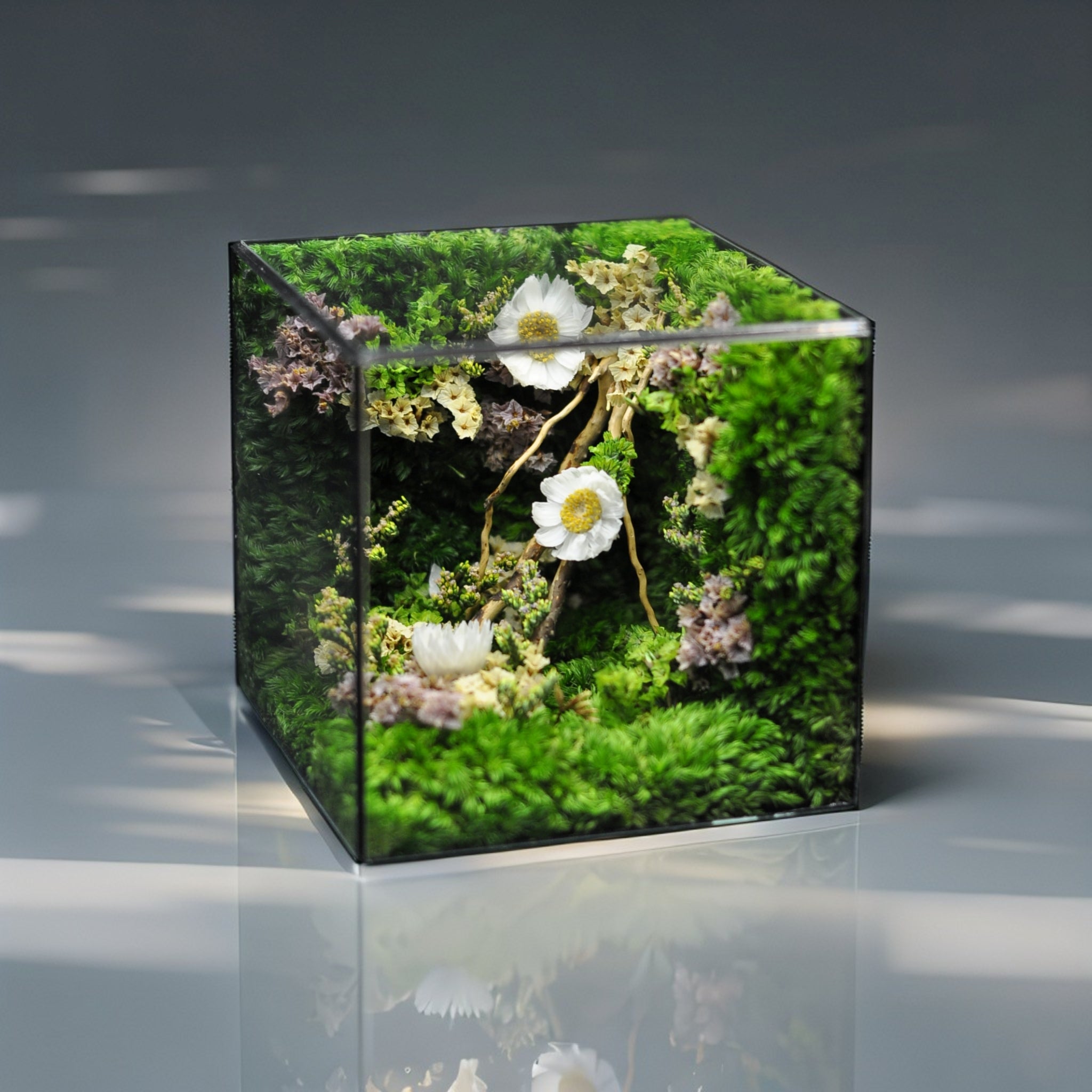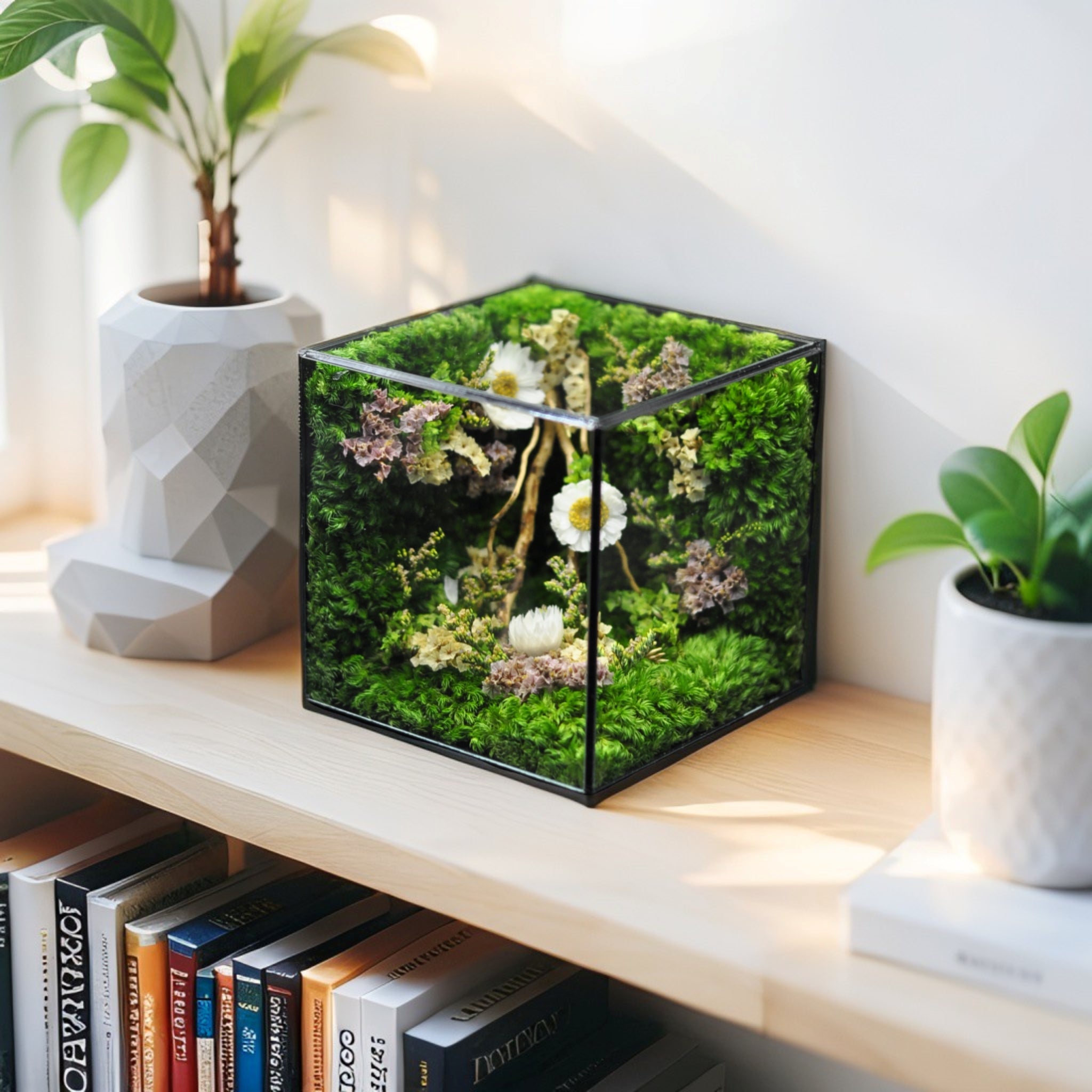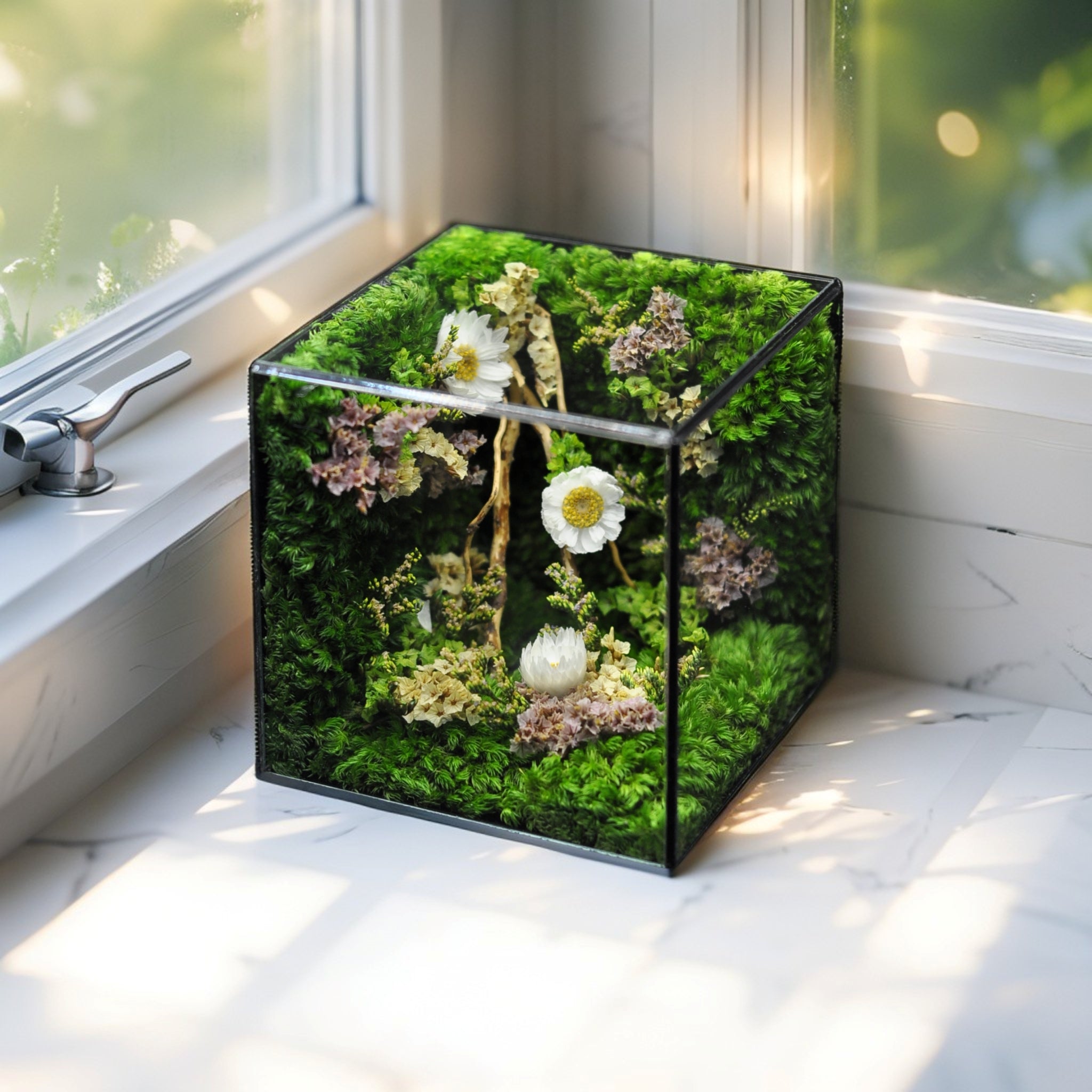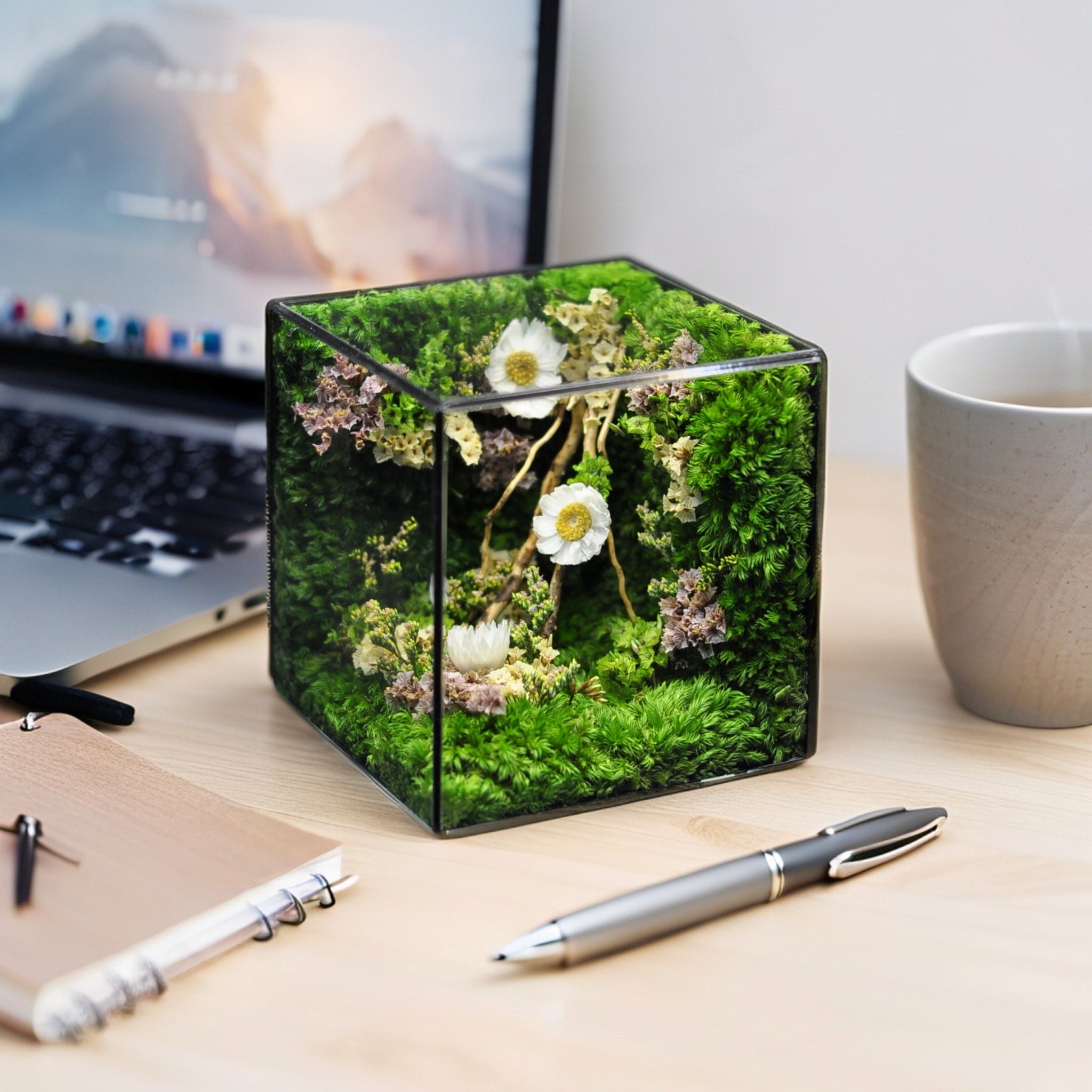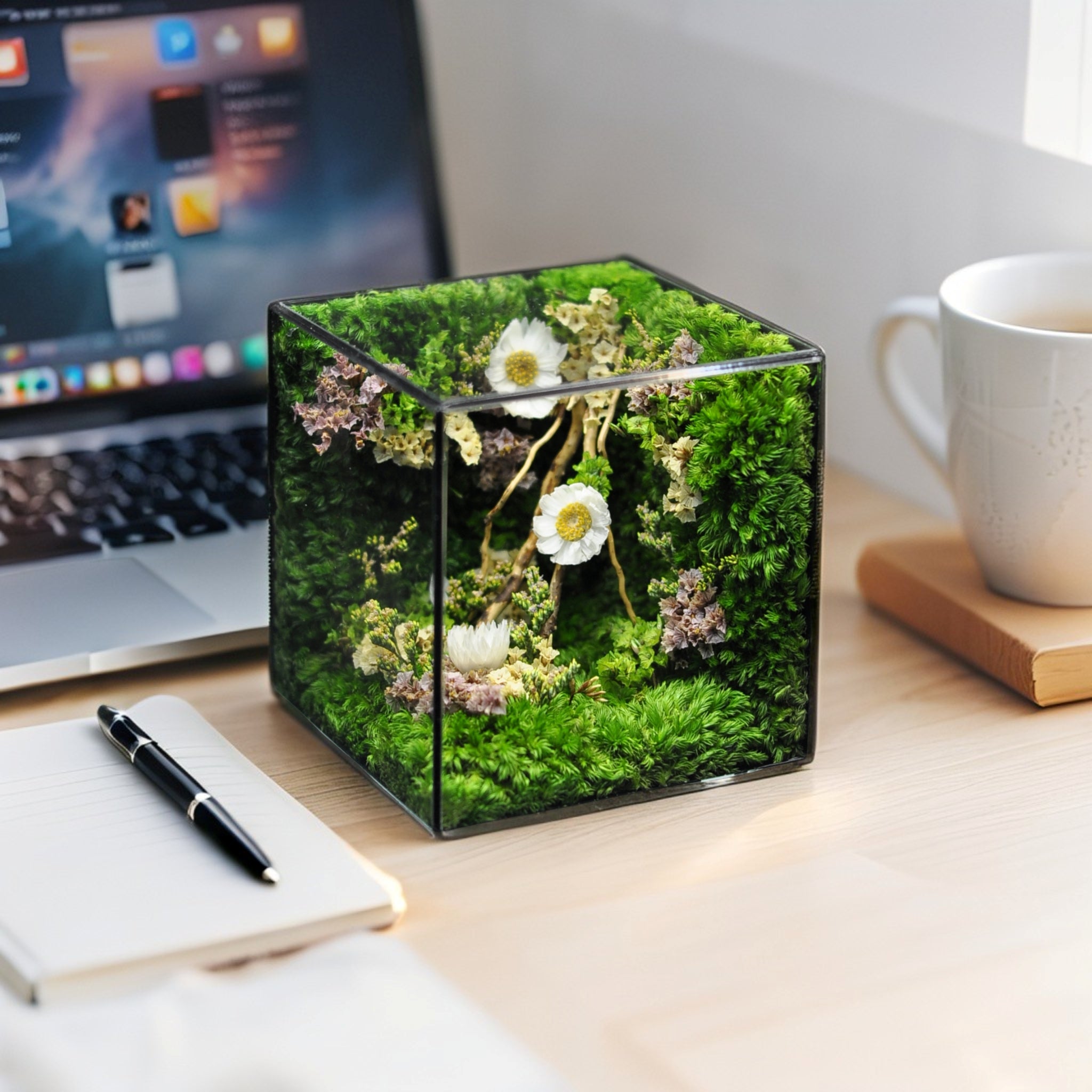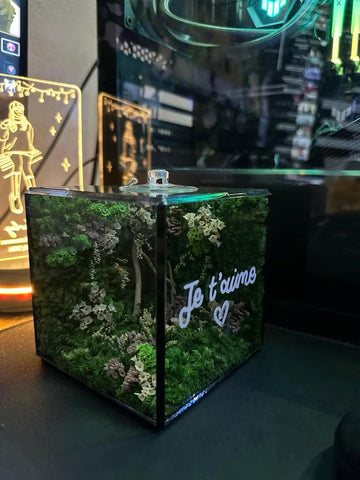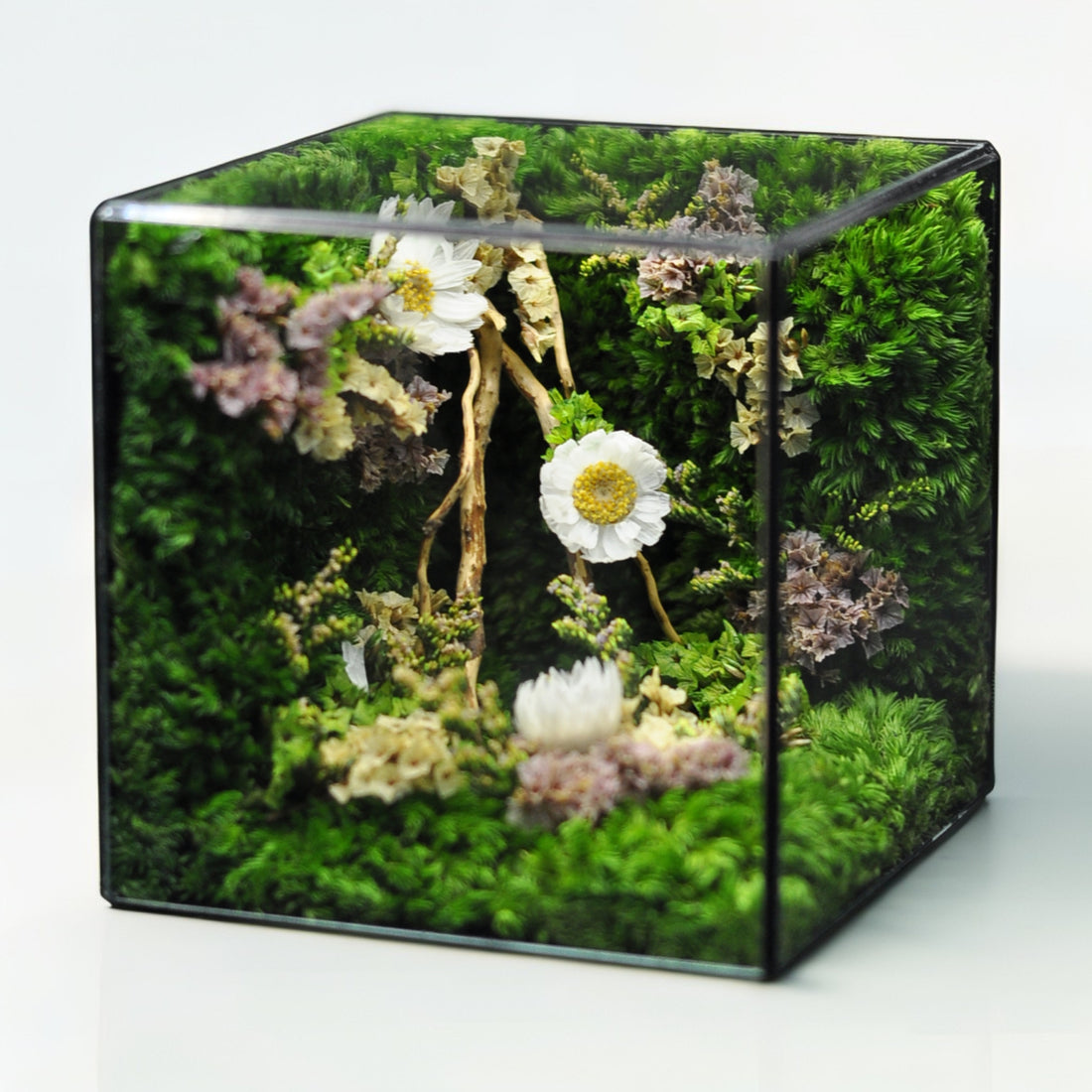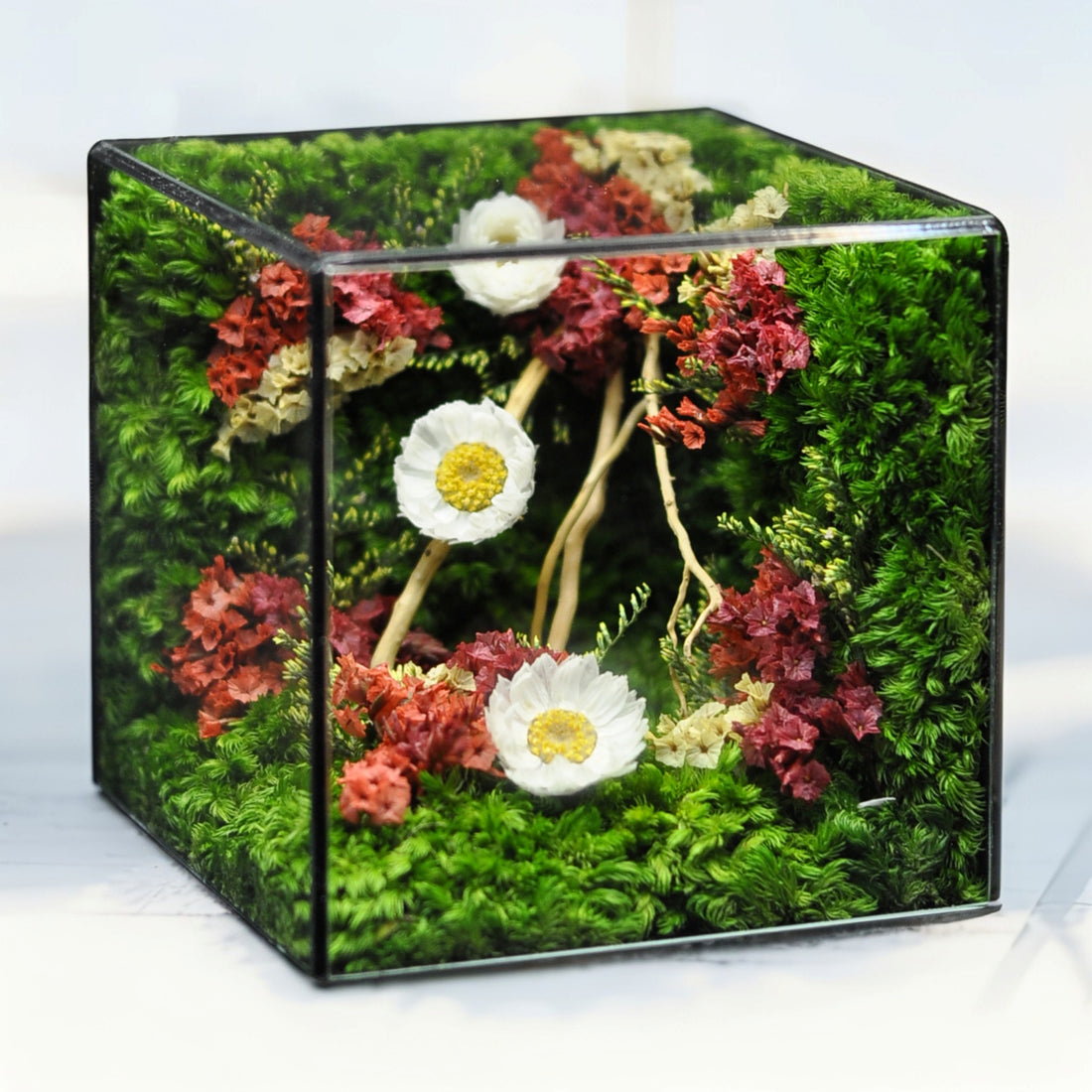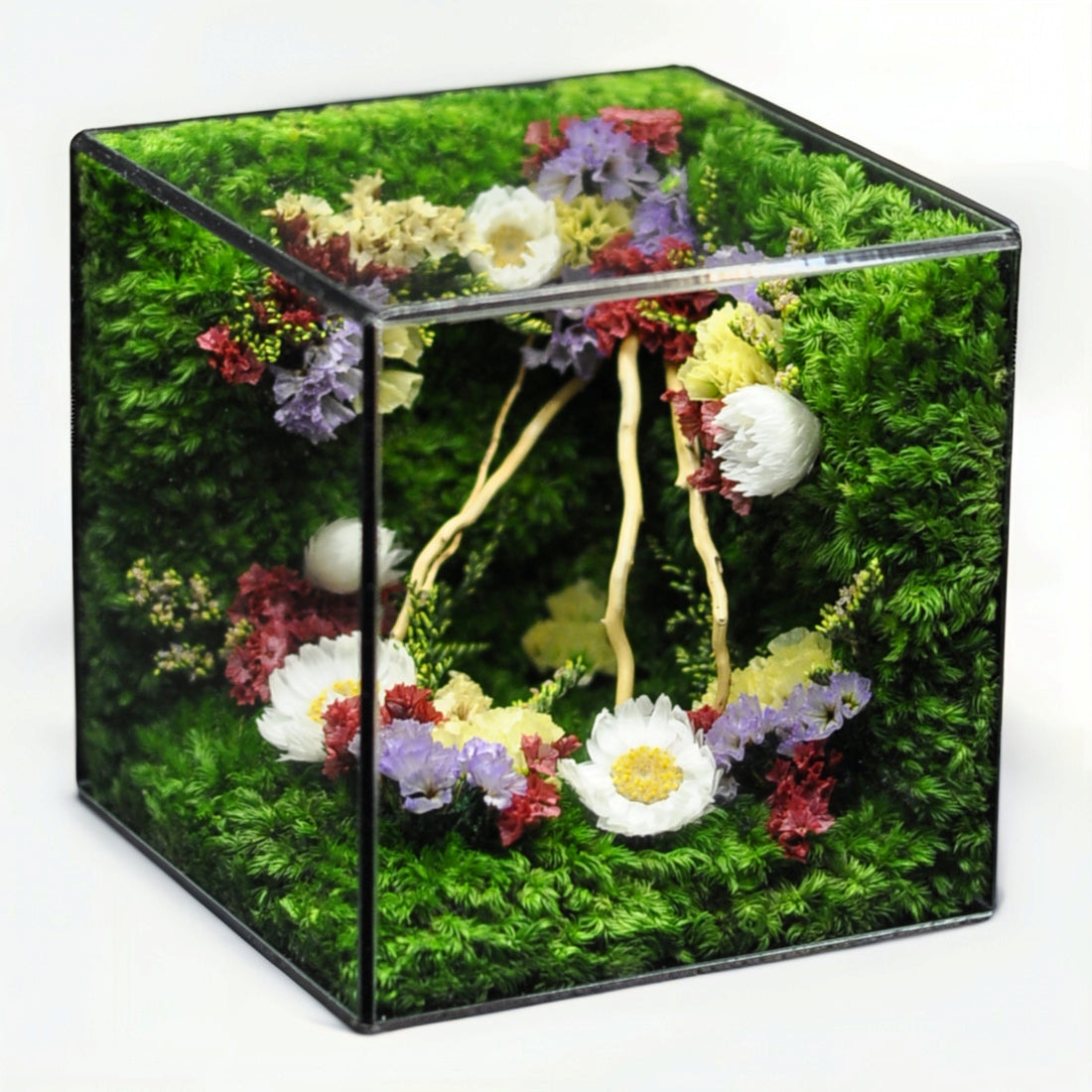Key Takeaways
Preserved moss art lets you infuse living textures into your space without the fuss of watering or pruning. To help you master this trend, here are the must-know tips—from selecting the perfect moss variety and preservation technique to crafting and maintaining five standout DIY moss art pieces.
- Choose the perfect moss variety: Reindeer, sheet, and cushion moss each offer distinct textures and densities—select based on your design scale and commit to high-quality, sustainably sourced specimens for best results.
- Optimize preservation for enduring vibrancy: Compare glycerin-based treatments—renowned for color retention and softness—with chemical methods that set quickly but risk brittleness and uneven fading; plan for occasional gentle dusting.
- Gather all essential materials upfront: Arm yourself with a hot glue gun, sturdy frames or bases, backing boards, sealants, and basic tools to streamline assembly and avoid mid-project runs to the craft store.
- Execute five easy DIY moss art projects: From minimalist wall frames and monogram letters to tabletop terrariums, coasters, and hanging panels, follow simple templates that require no advanced crafting skills.
- Implement proactive care routines: Shield your preserved moss art from direct sunlight and high humidity, perform light dusting with a soft brush, and apply a light sealant if needed to maintain color and texture over time.
- Source premium supplies from trusted vendors: Purchase top-grade preserved moss and reliable craft components from reputable online shops or local garden centers to ensure consistency, safety, and sustainability.
With these key takeaways under your belt, you’re ready to dive into step-by-step DIY tutorials that will bring natural elegance and lasting greenery to your living space. Let’s start crafting!
Introduction
Preserved moss art brings the lush textures of a forest indoors without a drop of water. By swapping live plants for glycerin-treated Reindeer, sheet, or cushion moss, you get vibrant, soft greenery that lasts for years—no pruning or watering required.
You’ll learn how to pick the perfect moss variety, optimize preservation methods, and gather all the essential tools upfront. Then, follow five simple DIY projects—from minimalist wall frames and monogram letters to tabletop terrariums and coasters—that demand no advanced crafting skills.
We’ll also cover where to source premium, sustainably harvested moss and share practical care routines to maintain color and texture over time. Let’s dive into effortless tutorials that elevate your home decor with enduring natural charm and minimal fuss.
What Is Preserved Moss?
Ever dreamed of bringing the lush feel of a forest wall into your home—without the constant watering, pruning, or soil mess? Enter preserved moss art: a biophilic décor solution that marries natural texture and vibrant color with zero upkeep.
Definition and Key Benefits
Preserved moss is genuine, wild-harvested moss that’s been stabilized through a glycerin-water solution (often a 1:1 ratio) and plant-safe dyes. This process replaces the moss’s natural moisture, preserving cellular structure so it stays soft, supple, and richly toned for years. Unlike live moss, preserved moss requires no soil, watering, or sunlight and never grows further. Key benefits include:
- Zero upkeep: No watering, misting, or trimming required.
- Insect-free: Stabilization removes nutrients, deterring pests.
- Acoustic softening: Can help dampen ambient noise.
- Year-round vibrancy: Holds its emerald-green hues indoors.
- Longevity: Lasts 3–5 years with proper care and periodic sealant touch-ups.
Types of Preserved Moss Commonly Used
Choosing the right moss variety sets the stage for stunning results. Here are three popular types:
Reindeer Moss
- Texture & Density: Spongy, three-dimensional clusters.
- Ideal Uses: Textural accents in wall art, 3D moss letters.
- Scale Tip: Best for adding depth in medium to large installations.
Sheet Moss
- Coverage & Aesthetic: Thin, carpet-like panels for seamless backgrounds.
- Ideal Uses: Smooth backdrops in frames, full-panel wall hangings.
- Scale Tip: Perfect for large surfaces where uniformity is key.
Cushion Moss
- Softness & Volume: Dense, pillow-like tufts.
- Ideal Uses: Terrarium layers, coasters, small accent pieces.
- Scale Tip: Great for close-up details and mixed-media designs.
Selecting the Right Variety for Your Project Scale
- Large Walls (8+ sq. ft.): Sheet moss provides full coverage with fewer seams.
- Medium Installations (2–8 sq. ft.): Combine a sheet moss base with reindeer moss highlights for texture contrast.
- Small Accents (<2 sq. ft.): Cushion moss or reindeer moss offer sculptural appeal in frames, letters, or coasters.
Armed with your moss selection, let’s gather the materials and set up your workspace.
Essential Materials and Tools for DIY Moss Art
Craft Supplies Checklist
- Preserved moss: Reindeer, sheet, and cushion varieties.
- Backing surfaces: Picture frames, wooden panels, canvases, foam boards.
- Adhesives:
- Low-temperature hot glue gun + glue sticks
- Clear-drying craft glue
- Acrylic sealant spray
- Display tools: Mesh or glass enclosures for terrariums and shadow boxes.
Tools & Prep
- Cutting tools: Sharp scissors, floral snips, craft knife, cutting mat.
- Measuring & marking: Ruler or tape measure, pencil.
- Cleaning & dusting: Soft-bristle craft brush, compressed air can.
- Safety & workspace:
- Wear nitrile gloves when handling dyed moss.
- Work on a disposable craft mat or newspaper to catch debris.
- Keep a dust mask handy for fine fragments.
- Shipping & storage tip: Upon arrival, gently fluff bulk moss and store in a breathable bag away from direct light to retain shape.
Gathering Essentials Upfront
Now that your workstation is ready, let’s explore how to preserve that lush vibrancy for the long haul.
Preservation Techniques for Enduring Vibrancy
Glycerin-Based Treatments
How it works: Fresh moss soaks in a glycerin-water solution, replacing cellular moisture to maintain softness. Often a plant-safe dye is added for even hue.
Pros:
- Soft, natural texture
- Color retention of 3–5 years indoors
- Lower dust buildup as glycerin binds particles
Chemical Preservation Methods
How it works: Moss is treated with solvent or phenol-based stabilizers.
Pros & Cons:
- Quick set and uniform color
- Firmer, less springy feel
- Some phenol solutions can be toxic—wear gloves and ventilate
- Typical lifespan: 2–4 years, risk of uneven fading
Maintenance Tip: Gentle Dusting & Sealant Touch-Ups (How to care for preserved moss wall art)
- Spray sealant: Apply 2–3 light coats of clear acrylic spray from 12–18 inches away.
- Dust removal: Use a soft-bristle brush or short compressed air bursts.
- Refresh schedule: Reapply sealant every 2 years.
- Caution: Test on a scrap piece to prevent fiber stiffening.
With preservation know-how in place, let’s create something beautiful.
5 Easy DIY Preserved Moss Art Projects
Looking for a weekend mini-makeover? Try one of these beginner-friendly DIY preserved moss art ideas.
1. Minimalist Moss Wall Frame (DIY moss wall art)
Skill Level: Beginner
Time: ~30 minutes
Materials & Tools
- 8×10 (or larger) frame with backing
- Sheet moss cut to fit
- Low-temp hot glue gun + sticks
- Scissors, pencil, ruler
Step-by-Step Assembly
- Remove glass and prep the backing board.
- Trace the board’s outline onto sheet moss; cut slightly oversized.
- Apply hot glue around edges; press moss into place.
- Add small glue dots to fill the center.
- Trim excess moss flush with frame edges.
Hanging Instructions (How to hang moss wall art)
- Attach D-rings or sawtooth hangers to the back.
- Mount away from HVAC vents to avoid drying.
- Group multiple frames at varied heights for a gallery effect.
2. Monogram Letter Moss Art (Moss art tutorial)
Skill Level: Intermediate
Time: ~45 minutes
Materials & Tools
- Chipboard or wooden letters
- Stretched canvas or wooden board
- Reindeer and cushion moss mix
- Low-temp hot glue gun, optional spray adhesive
- Painter’s tape, scissors
Steps
- Secure letters on the board with glue.
- Optional: Lightly coat letters with spray adhesive.
- Press moss onto each letter until fully covered.
- Trim stray fibers with scissors.
Display Ideas
- Spell words like “HOME” or initials for entryways.
- Lean against a shelf or hang as part of a gallery wall.
3. Tabletop Terrarium with Preserved Moss (Can you use preserved moss in a terrarium?)
Skill Level: Beginner
Time: ~40 minutes
Materials & Tools
- Glass cloche or clear terrarium vessel
- Cushion moss, small pebbles
- Floral tweezers
- Optional accents: driftwood, micro-plants (tillandsia)
Steps
- Add a ½-inch layer of pebbles.
- Nestle cushion moss on top using tweezers.
- Arrange driftwood or stones for interest.
- Seal with a cloche or glass lid.
Styling Tips
- Place on desks or side tables in indirect light.
- Rotate occasionally for even color exposure.
4. DIY Moss Coasters (Easy DIY preserved moss art ideas)
Skill Level: Beginner
Time: ~20 minutes
Materials & Tools
- Unfinished wooden coaster blanks or cork
- Thin sheet moss or cushion moss
- Clear-drying craft glue
- Fine-grit sandpaper, clear sealant spray
Steps
- Sand coasters smooth; wipe off dust.
- Spread craft glue thinly; press moss onto each coaster.
- Trim flush with a craft knife.
- Lightly spray edges with sealant to prevent fraying.
Usage Tips
- Use as decorative accents—avoid direct water exposure.
- Pair with natural wood or slate coasters for contrast.
5. Hanging Moss Panel (Preserved moss decor)
Skill Level: Intermediate
Time: ~1 hour
Materials & Tools
- Plywood or MDF panel (12×12 or custom size)
- Combination of sheet, reindeer, and cushion moss
- Low-temp hot glue gun
- Painter’s tape, craft knife
Steps
- Sketch geometric or abstract patterns lightly in pencil.
- Apply hot glue in sections; press moss variety by variety.
- Trim edges clean with a craft knife.
- Attach hanging hardware (D-rings or heavy-duty command strips).
Installation Tips
- Use wall anchors for heavy panels.
- Backlight with LED strips for a subtle glow.
Care and Maintenance of Preserved Moss Art
Ideal Placement
- Indirect light only: Avoid direct sun to prevent UV fading.
- Stable humidity: 40–60% preferred.
- Room temperature: 60–75°F.
- Avoid: HVAC vents and steam-heavy bathrooms.
Cleaning & Dust Removal
- Soft-bristle brush: Gently sweep dust away.
- Compressed air: Short, distant bursts for intricate designs.
- No liquids: Water or cleaners can damage glycerin and glue.
Long-Term Preservation
- Loose patches: Re-adhere with craft glue or a dab of hot glue.
- Fading areas: Light sealant touch-ups can revive color.
- Glue discoloration: Replace yellowed glue beads as needed.
- Humidity darkening: Move art to a drier spot and allow 24 hours for colors to normalize.
Frequently Asked Questions
How long does preserved moss art last?
With proper indoor conditions and a sealant refresh every two years, preserved moss art stays vibrant for 3–5 years before subtle fading appears.
Is preserved moss toxic or does it attract bugs?
Not at all. Stabilization strips moss of any nutrients, and non-toxic glycerin treatment makes it insect-resistant and safe for homes.
Does preserved moss need water or sunlight?
Nope—preserved moss art thrives in low-light, no-water environments. Avoid direct sunlight and moisture to protect color and structure.
Can you use preserved moss in terrariums?
Absolutely. While it won’t live or grow, preserved moss adds instant texture and greenery without maintenance. Activated charcoal is optional since there’s no decay.
How do you hang moss wall art?
Use D-rings, sawtooth hangers, or command strips based on weight. Anchors in studs improve stability for larger panels.
Where to Buy Quality Preserved Moss & Craft Supplies
Top Online Retailers
- Moss Mile (https://www.mossmile.com): Ethically harvested, FSC-certified, non-toxic glycerin-moss.
- Forest Floor Creations (https://www.forestfloorcreations.com): Bulk and eco-friendly options.
- Moss & Stone Marketplace (https://www.mossandstone.com): Specialty moss blends and kits.
Local Garden Centers & Craft Shops
- Nurseries and home improvement stores often carry sheet and cushion moss.
- Craft retailers (Michaels, Hobby Lobby) stock reindeer moss and adhesive kits.
- Ask staff about sustainably sourced products.
Ensuring Sustainability & Ethical Sourcing
- Look for FSC-certified moss or suppliers detailing harvest methods.
- Choose transparent, small-batch producers over mass-market vendors.
- Favor non-toxic glycerin treatments instead of harsh solvents.
Expert Tips & Resources
- Incorporating Biophilic Design: Studies show natural textures can boost well-being by up to 15%.
- Additional Tutorials: “The Book of Moss” by Wolfgang Frey & Martin Wilmking; YouTube: DIY Plant Cast.
- Trusted Tools: Surebonder Low-Temp Glue Guns; EcoCraft FSC-certified backing boards.
With these expert insights, tools, and projects, you’re ready to transform any space with easy DIY preserved moss art. Enjoy blending creativity, nature, and long-lasting beauty in your home.
Conclusion
Preserved moss art offers a unique blend of genuine woodland texture and effortless upkeep. Through glycerin stabilization or alternative treatments, real moss retains its soft, vibrant hues for years without watering, pests, or growth. By selecting the right variety—sheet moss for seamless backdrops, reindeer moss for three-dimensional accents, or cushion moss for close-up details—and following our materials checklist and preservation techniques, you can create anything from minimalist frames to monogram letters, terrariums, coasters, and hanging panels.
With clear guidance on tools, adhesion methods, sealant refreshes, and ethical sourcing—from FSC-certified suppliers to non-toxic dyes—this tutorial equips you to craft sustainable, noise-dampening, biophilic décor. Ready to elevate your space? Choose a project, assemble your supplies, and let preserved moss transform your home with enduring, natural beauty.
Frequently Asked Questions (FAQ)
Q: How long does preserved moss art last?
A: Preserved moss art typically remains vibrant for 3–5 years indoors when refreshed with a clear acrylic sealant every two years.
Q: Is preserved moss real moss?
A: Yes. Preserved moss is genuine, wild-harvested moss that’s been stabilized in a glycerin-water solution and dyed to maintain its softness and color.
Q: Does preserved moss need water or sunlight?
A: No. Stabilized moss requires no soil, watering, or sunlight—just keep it out of direct sunlight and high-humidity areas.
Q: Is preserved moss toxic?
A: No. The stabilization process removes nutrients that attract insects, and non-toxic glycerin treatment makes it safe and insect-resistant.
Q: How do you clean preserved moss art?
A: Gently dust with a soft-bristle brush or use short bursts of compressed air. Avoid water or cleaners, and reapply clear acrylic sealant as needed to refresh the surface.
Q: How do you hang moss wall art?
A: Use D-rings, sawtooth hangers, or heavy-duty command strips suited to the piece’s weight. For larger panels, secure wall anchors into studs and avoid mounting near HVAC vents.
Q: Can you use preserved moss in a terrarium?
A: Yes. Layer pebbles in a glass vessel, nestle cushion moss with tweezers, add optional accents like driftwood, and seal with a cloche or lid for low-maintenance greenery.

